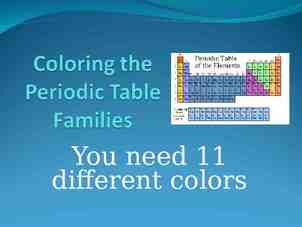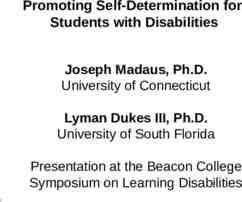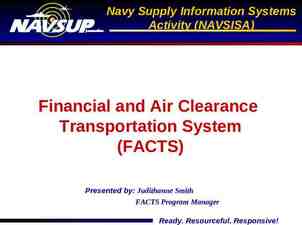CHAPTER FIVE PREPARING SCIENTIFIC PAPER AND PRESENTATION 1
48 Slides487.50 KB

CHAPTER FIVE PREPARING SCIENTIFIC PAPER AND PRESENTATION 1

Scientific Research Writing Scientific Research Writing is the communication between author(s) and readers in indirect way. One does not write to himself/herself, writing is targeted for the benefit of others. Focus on the need of the reader, not on the writer’s desire. The key to making writing informative is organization. It begins with proposal writing Research paper: is written to record a particular topic in an academic area of arts/sciences/social sciences. It is detailed and follow a strict format of referencing, books/papers/or other reliable sources. 2

Proposal writing Research proposal is the detailed plan of study or A specific course of action will be followed or It is a document which sets out your ideas in an easily accessible way. Why Proposal Writing? In order to carry out research, in general financing is required. Convince others that the project you have designed is important, worth the effort. Convince others that you have the ability to carry out the research design and report the findings. 3

Generate funds to sustain the research units operation. There are several national and international sources of funding and the process for obtaining funding is realized through proposal submission and review. The objective in writing a proposal is to describe: – what you will do? – Why it should be done? – How you will do it and – What you expect will result? Being clear about these things from the beginning will help you to complete your research in a timely fashion. 4

A well- thought out and well- writing proposal can be judged according to three main criteria: Is it adequate to answer the research question and achieves the study objective? Is it feasible in the particular set-up for the study? Does it provide enough detail that can allow another investigator to do the study and arrive at comparable results? What makes a good proposal? A well-prepared application should require minimal effort on the part of the reviewer. Proposals The must demonstrate high scientific quality. requested funds must be in proportion to the proposed project (cost- effectiveness). 5

Components of a scientific research Difference between a research report and a research proposal Research Proposal Research Report A Title An Abstract An Introduction A literature review Materials and Methods Results Discussion Conclusion Acknowledgement Reference/Bibliography Appendices A Title Summary An Introduction Statement of the problem Objective/aim of the study Materials and methods o Study area o Study design o Sample size o Sampling methods o Description of variables Work plan Budget Reference/Bibliography Appendices 6

TITLE PAGE This is the first impression the reader gets and greatly contributes to the visibility of the paper. The title should be short and clear, not include jargon or nonstandard and unexplained abbreviations and the reviewer should be able to understand from the title the intentions of the research. A good title is defined as the fewest possible words that adequately describe the contents of the paper. The title is extremely important and must be chosen with great care as it will be read by thousands, whereas few will read the entire paper 7

Indexing and abstracting of the paper depends on the accuracy of the title. An improperly titled paper will get lost and will never be read. Avoid Acronyms that are known only to specialized community It should capture the fundamental nature of the experiments and findings Example 1: Action of Antibiotics on Bacteria Action: should be defined Antibiotics: should be listed Bacteria: should be listed Example 2: Too vague: "Measuring a nerve response in a Frog" Just right: "The Effects of Ethanol on the Compound Action Potential of a Frog Sciatic Nerve" 8

How to Prepare the Title? 1) Make a list of the most important keywords 2) Think of a title that contains these words 3) The title could state the conclusion of the paper 4) The title NEVER contains abbreviations, chemical formulas, proprietary names or jargon 5) Think, rethink of the title before submitting the paper 6) Be very careful of the grammatical errors due to faulty word order 7) Avoid the use of the word “using” 9

The abstract is the last section to be written (after completion of the paper). It tells us what the study is about. It can start with a sentence or two outlining the work and stating the objective It should provide a brief summary of each of the main sections of the paper: 1. State the principal objective and scope of the investigation 2. Describe the methods used (without too many details) 3. Summarize the results, and (major implications of the paper that must be consistent with the study) 4. State the principal conclusions (without overestimating their possible relevance) 10

In the abstract the present tense should be used to refer to facts already established in the field, while the findings from the current study should be dealt with in the past tense. The ideal length is approximately, 250 words; average range, 150 – 250 words. Avoid abbreviations/acronyms/jargon (except in rare cases) Don’t use self-promoting statements -such as “Our findings unambiguously confirm that .” The best way to conclude an Abstract is to be assertive, direct statement approach, -such as -we conclude that ., These data suggest that .,This study indicates ., These results further support ., Our data indicate ., etc Key Words; Usually 5/6 indicative words The keywords enable the database searching of the article and should be provided in compliance with the instructions to authors. Don’t cite references 11

Short description of an abstract A b s tra c t C o n te n t F o rm a t B r ie f In fo r m a tiv e C o n c is e C ondensed S tru c tu re d S in g le p a r a g r a p h Short sentences, but not telegraphed No references, tables or figures No acronyms, abbreviations. No excessive details 12

INTRODUCTION What did you/others do? Why did you do it? The aim of the introduction is to introduce the topic to the readers in a straight forward way, avoiding excessive wordiness Must include literature review as well as relevant Figures, Tables, Schemes, etc . Start the section with a general background of the topic. Add 2-3 paragraphs that discuss previous work. Point out issues that are being addressed in the present work. Keep in mind, the fact that, you are telling a story. 13

Some questions to ask yourself before you start writing 1. Why is the study need to be done? (purpose, importance, ) 2. What is the problem/question/hypothesis that needs to be addressed? Overall goal, specific aims? 3. What is the scope of the study? What is the range of my inquiry? What I am going to do? How many subjects are there? 4. What is the significance? Why is it important? Articulate only your most important “significance” statement. 5. Have I adequately reviewed the literature? 14

Guidelines for writing the Introduction part Consider that the readers: Are intelligent and scientists May not know the topic at all Few will know it as well as you do Try to put yourself in the readers‘ position Adapt your language to your audience Introduce the topic broadly (helps the reader) Avoid jargon 15

Keep your writing concise and on target Use acronyms and abbreviations sparingly Is the abbreviation necessary at all! If it only used once (or twice) then it isn‘t! Use the active voice as much as possible Avoid lengthy or unfocused reviews of previous research. Avoid general reference works such as textbooks. Define any specialized terms or abbreviations 16

Advices on the Introduction 1. The first sentence should briefly and concisely state the question or hypothesis; that is, describe the problem you are addressing and state the purpose of the study. 2. Define the biological or chemical context of the problem: 3. Define obscure terms. 4. Significance: Articulate the importance of the work 5. Don’t use “et al.” in the introduction. Use the term “colleagues” or “co-workers” 6. Short sentences work best. 7. The introduction should answer the following question in the reader’s mind: “Why should I care about this study?” 8. Do not include findings of the present study (preliminary data) in the introduction, if any. Also do not include a detailed discussion of methods or results you expect. 9. Ask yourself: “Is the introduction focused and relevant?” 17

AIMS AND OBJECTIVES The aims should describe what you intend to achieve by doing this piece of work. OBJECTIVE: what the project is trying to achieve. Objectives should be SMART Specific Measurable Attainable Realistic Time bound Your objectives are the small steps you need to reach in order to achieve your aim. Aims and objectives should be realistic, consistent, and link them to methods, timetable, and outcomes. Must state what action will be performed and what will be accomplished I will do A, accomplish B so I can 18

LITERATURE REVIEW Is a classification and evaluation of what accredited scholars and researchers have written on a topic. Recognize relevant information what literature exists, and your informed evaluation of the literature. Is organized according to a guiding concept such as your research objective, thesis, or the problem/issue you wish to address. A literature review must develop questions for further research. 19

Questions to Ask Yourself Do I have a specific question which my literature review helps to define? What type of literature review am I conducting? How good are my information seeking skills? Is there a specific relationship between the literature I've chosen to review and the problem I've formulated? Have I critically analyzed the literature I use? Have I cited and discussed studies contrary to my perspective? Will the reader find my literature review relevant, appropriate, and useful? What were the authors trying to discover? How was the data collected? What information do you have on the sample? What was measured and what were the results? What do the authors conclude and to what do they attribute their findings? Can you accept the findings as true? How can you apply these findings to your own work? 20

MATERIALS AND METHODS (EXPERIMENTAL SECTION) Divide this section into Materials & Methods, Characterization, Measurements and Data analysis Materials and Methods Methods: How did you do it? The methods section is one of the most important parts of a scientific manuscript and its aim is to give the reader all the necessary details to replicate the study. The two essential elements of this section are a clear presentation of the study design and the identification and description of the measurement parameters used to evaluate the purpose of the study. Mention all methods/chemicals/instruments etc used Refer previously reported procedures Describe new methods carefully, clearly and completely 21

Use diagrams (schemes) where possible Describe the experimental design in detail Must identify accurately experimental animals, plants, and microorganisms used by genus, species and strain The source of subjects studied, number of individuals in each group used, their sex, age, and weight must be clearly stated For chemicals used, include exact technical specifications and source or method of preparation. Avoid the use of trade names of chemicals, generic or chemical names are preferred. 22

The Components of Materials and Methods 1. Reagents and equipments or software programs. Where were they purchased? Who gave them to you (name, institutional affiliation)? What was the quality of the reagent (i.e. purity)? Indicate the supplier of the kits. For equipment you want to use in your study, specify the model number, name of the manufacturer, and city and state where the manufacturer/supplier is located. 2. Description of specific methods. It is advisable to use subheadings. 3. Statistical methods Report the software program you want to use in order to analyze your data. 23

RESULTS Answers to the objectives What did you find? Omit redundant/unnecessary results Do not remove those that invalidate the initial hypothesis Present your data as clearly as possible Use tables and figures: the aim is to transfer the information to the reader Results section is the core or heart of the paper and written in the past tense 24

It needs to be clearly and simply stated since it constitutes the new knowledge contributed to the world The purpose of this section is to summarize and illustrate the findings in an orderly and logical sequence, without interpretation The text should guide the reader through the findings, stressing the major points Do not describe methods that have already been described 25

Methods of presenting the data Directly in the text, In a table or In a figure All figures and tables must be accompanied by a textual presentation of the key findings Never have a table or figure that is not mentioned in the text Tables are appropriate for large or complicated data sets that would be difficult to explain clearly in text. Figures are appropriate for data sets that exhibit trends, patterns, or relationships that are best conveyed visually. Any table or figure must be sufficiently described by its title and caption or legend, to be understandable without reading the main text of the results section. The order of figures should follow the discussion themes and not the sequence they were conducted 26

DISCUSSION It is the hardest section to write What do the results mean? Describe a healthy, detailed discussion and be careful with your data interpretation Don‘t just repeat in the text what is already clear in the table/figure and discuss only the main points Discuss your data first then how your data compare or contrast with other previous works. Avoid Citing every argument with a published work For example, "Our results on the cyclisation of the brominated derivatives (Table 1) were in general agreement with those reported by Smith and Jones21. We can confirm that. 27

Components of the discussion Try to present the principles, relationships, and generalizations shown by the Results Point out any exceptions or any lack of correlation and define unsettled points Show how your results and interpretations agree or contrast with previously published work Discuss the theoretical implications of your work, and any possible practical applications. State your conclusions as clearly as possible Summarize your evidence for each conclusion 28

CONCLUSIONS The conclusion is a separate, last paragraph that should present a concise and clear "take home" message avoiding repetition of concepts already expressed. Summarize the implications of your research findings for policy makers, practitioners, or other researchers Include brief discussion on future perspectives and/or application of present work to other disciplines. Identify potential for future research or recommendations should be addressed only if appropriate. Important: Do not rewrite the abstract. 29

ACKNOWLEDGEMENTS Opportunity to thank those directly/indirectly involved in the scientific study Remember to thank those participating in: Technical support Provision/collection of samples Providing an analysis or identification Providing comments Providing money! (funding agency) Do not use the word “wish”, simply write “I thank .” and not “I wish to thank ” Show the proposed wording of the Acknowledgement to the person whose help you are acknowledging 30

BUDGET The proposal should contain a detailed budget. The budget asked should be in proportion to the volume and complexity of the work activities. Be aware that funders vary as to what they are prepared to pay in terms of direct project costs, such as staff and equipment, and indirect costs, such as overheads. The funder might request to approve before hand own inputs or inputs from other institutions participating in the project. 31

REFERENCES Referencing is a standardized way of acknowledging the sources of information and ideas that you have used in your document. A list of all the references used in the text must be written. The styles vary for different journals. (Use ENDNOTE, Ref Works., Vancouver/Harvard vs ApA style). Harvard format (the name and year system) is the most widely used Alphabet-Number system is a modification of name and year system Citation order system Some journals require complete titles of the cited references 32

In-text citations In name and year system: Citation in the text is followed by the author’s last name and year of publication between parentheses. – If they were two authors then both last names are written. – If more than two then the only first author’s name is written followed by the abbreviation et al. Eg. Schwarz, G., (2005). Molybdenum cofactor biosynthesis and deficiency. Cell. Mol. Life Sci., 62, 2792-2810. If a single statement requires more than one citation then the references are arranged chronologically from oldest to more recent, separated by semicolons. 33

If more than one reference share the same year then they are arranged alphabetically within the year. In alphabet-number system: Citation by number from an alphabetically arranged numbered reference list. In citation order system: The references are numbered in the order they are mentioned in the text Reference List Any papers not cited in the text should not be included. Reference lists allow readers to investigate the subject in greater depth. A reference list contains only the books, articles, and web pages etc that are cited in the text of the document. A bibliography includes all sources consulted for background or further reading. 34

Appendices: You may include all relevant information, such as Raw data, Logistic, etc Plagiarism: is intellectual theft. It means use of the intellectual creations of another without proper attribution. Plagiarism may take two main forms, which are clearly related: 1. To steal or pass off as one's own the ideas or words, images, or other creative works of another. 2. To use a creative production without crediting the source, even if only minimal information is available to identify it for citation. Credit must be given for every direct quotation, for paraphrasing or summarizing a work (in whole, or in part, in one's own words), and for information which is not common knowledge.” “ Plagiarism is strictly forbidden’’ 35

Presentation of scientific paper Presentation outline Introduction Objective Experimental part Result and discussion Conclusion Acknowledgement 36

Top tips for successful presentations 1) Understand Your Audience The key to strong preparation is a thorough understanding of your audience Who are they? What is their theoretical knowledge? What is their practical knowledge? What is their level of education? What is their knowledge of terminology? How fast can they pick up new ideas? How wide is their concentration span? What are their expectations? What do they need to know? What are they interested in? 37

Class Activity: How would you approach the following audience groups? A) Experts B) Novices (beginners) C) Mixed Experts –Eliminate introductory material –Can be much more focused on the “interesting” results Novices (beginner) –Assume your audience is intelligent but knows nothing –80% of material should be introductory Mixed –Most difficult –60% of material should be introductory

2) Establish Your Objectives Good presenters focus on their audience, they address real people with real needs. Poor presenters don’t address real people, so they don’t get a real response. Think about why you are making the presentation. Is it: To inform? To persuade? To entertain? You will often have a mixture of some or all of these objectives

3) Choosing and organizing the content What are you trying to tell the audience? Tell them what you are going to tell them 2-3 points for 15 minute talks 3-4 points for 30 minute talks 4-6 points for 1 hour talks Write a basic outline Make a rough draft with slides Figure out how many slides you can use Slides without graphics should be up for at least 30 sec Slides with graphics should be up for at least 1 min and cut what is not necessary 4) Be Prepared The key to a successful presentation is a careful and intelligent preparation. We cannot all be brilliant, witty, or elegant public speakers, but we can all produce a polished and professional performance if we want to. Class activity: Is presentation an art or a skill?

5) Select an appropriate Timing Class Activity If you have the mandate to choose a day (time) to give your presentation, which one would you prefer? At what time? Monday Tuesday Wednesday Thursday Friday Before lunch After lunch End of day people are thinking about their week The best times are thus: Tuesday to Thursday, 10am-12 midday! people are thinking about their weekend people are thinking about food people are sleepy people are tired

6) Have a clear structure Once you have thought about the message and your key points, you need to fit them into a structure that will produce the response you want Make the structure of your presentation clear early on (outline of the presentation) An audience feels more comfortable if they know where they are throughout a presentation Preparing slides Use a sans serif font e.g. Arial Use bold face type Don’t use italics or caps Choose a size that is easy to read (36 – 18 font, preferably 24)

Cont d Make the headline a sentence and keep it left-justified Try to include an image on every visual Avoid diagrams that are too complex Use white or light color backgrounds Don’t use lists with more than 6 items Break long lists into multiple slides Don’t use complete sentences Try to keep list items to 6 words or less Don’t use abbreviations or acronyms

Preparing slides with graphics Add graphics to viewer retention Try to avoid large lists Keep graphics simple Use white or light colored backgrounds Take care of color blind people Make all text readable Hear and See See Hear Audience Retention 0 20 40 Recall (%) 60

Think carefully about content and timing Make sure you have finished speaking before your audience has finished listening. When preparing your presentation, decide: What you want to include How much time you have How much your audience can handle Develop a structure that is flexible enough for you to adapt as you see your time is going.

Plan your delivery You should address the audience If your listeners do not feel that you are talking to them personally, they might think they should have stayed at home and just listened to a recording of your presentation So: Speak directly to the audience Speak clearly Speak at the right speed Use the right kind of language Spoken language is different from written language Written language tends to have Long sentences Complex vocabulary Complex arguments Spoken language should Have shorter sentences Use simpler vocabulary and simpler arguments

The structure of the presentation Structure your presentation according to the guidelines, facilities and time allocated Seminars 15 minutes Proposal 15 minutes Progress reports 15 minutes Thesis defense 30 minutes YOU MUST LEAVE YOUR AUDIENCE WITH A SENSE THAT THEY HAVE BEEN GIVEN A WELL STRUCTURED AND ORGANISED PRESENTATION!

The structure of the presentation Introduction: Give an overview and what you intend to accomplish during the presentation Body: This should be a logical sequence of information and should be well supported with evidence, visual aids and audience involvement Conclusion: This is where you point out to the audience how you have achieved what you promised in the introduction IMPORTANT Proper citation of previous works is required where ever applicable. Finally, thinks the following very carefully, What are you going to do? How are you going to do it? What are you going to get? What is the contribution to the global society and scientific community?






